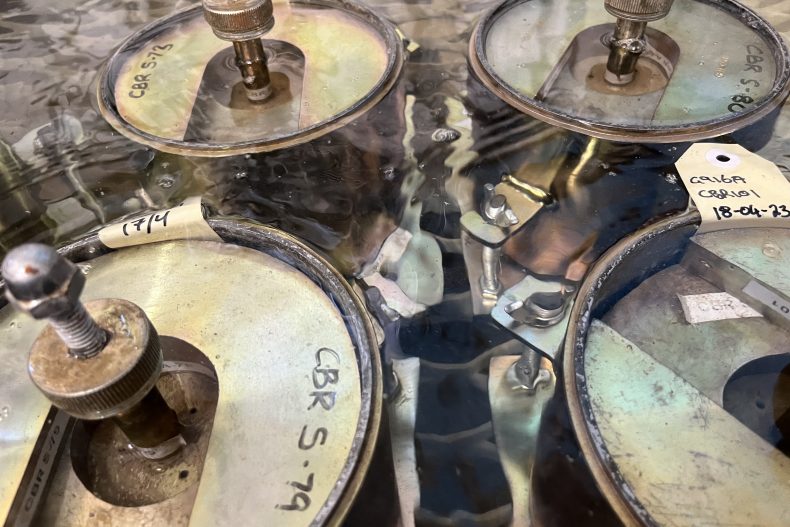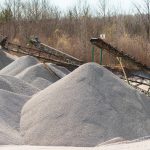Developed by the California State Highway Department (Caltrans), the California Bearing Ratio test (CBR test) is a penetration test used to evaluate the strength of subgrade soil and other paved areas and their materials, such as roads, pathways, and airstrips. CBR testing plays a crucial role in the design of flexible pavements and has been widely adopted internationally, including throughout Australia, since its inception in the 1930s.
Remoulded samples that are compacted at the appropriate moisture content can be used for laboratory testing. Laboratory testing can simulate the expected subgrade moisture content and level of disturbance on-site during and after construction. Alternatively, the CBR test can be conducted in-situ, where seasonal variations in moisture content must be considered.
The process
After preparing the soil sample through a 19.0mm sieve, the percentage of the sample that is retained on the sieve is determined. The material retained on the sieve is discarded. The portion of the sample that passes through the 19.0mm sieve is reduced into representative samples for evaluating the maximum dry density (standard or modified), optimum moisture content, and CBR. The sample is then mixed with sufficient water to achieve the desired laboratory moisture ratio, and left to cure until the water is thoroughly and uniformly distributed.
The Australian Standard for conducting CBR testing underwent a revision in early 2017. As per the amended standard, the curing times for certain soils during CBR testing were extended to account for the difference between the Field Moisture Content (FMC) and Optimum Moisture Content (OMC) of the soil sample. Based on the FMC to OMC difference and the Liquid Limit (LL) of the sample, the time required for curing the sample (i.e., leaving the sample in curing containers to allow the moisture content to reach equilibrium) has increased up to 7 days. It is important to note that this change primarily impacts cohesive materials, as the curing time for sands and gravels is usually a matter of hours rather than days.
After the curing process, the test portion is remoulded by compacting three layers for standard or five layers for modified into a calibrated mould. Once the test portion is compacted, an initial reading is obtained for swell. The remoulded test portion and mould are then placed in a water bath that allows free access of water to the top and bottom. The test portion is then soaked for 4 days after which the final swell reading is obtained, and the sample is removed from the water bath and allowed to drain prior to penetrating.
Evaluating results
The CBR test method involves using a cylindrical plunger that penetrates the material at a rate of 1 ±0.2 mm/min. The loads are recorded at least at 0.5,1.0,1.5,2.0,2.5,3.0,4.0,5.0,7.5,10.0,12.5 mm. The load-penetration curve is plotted and the CBR value is determined from the greater value of either the 2.5mm or 5.0mm value. This is expressed as a percentage of the standard load obtained from identical testing on a high-quality granular material, resulting in the CBR value. The moisture content of the top 30mm and if required that of the remaining specimen is also obtained.
All Geotechnical Services base laboratories are NATA accredited and are proficient in all aspects of CBR testing. Contact our team here if you’d like more information or click here to request a quote.



